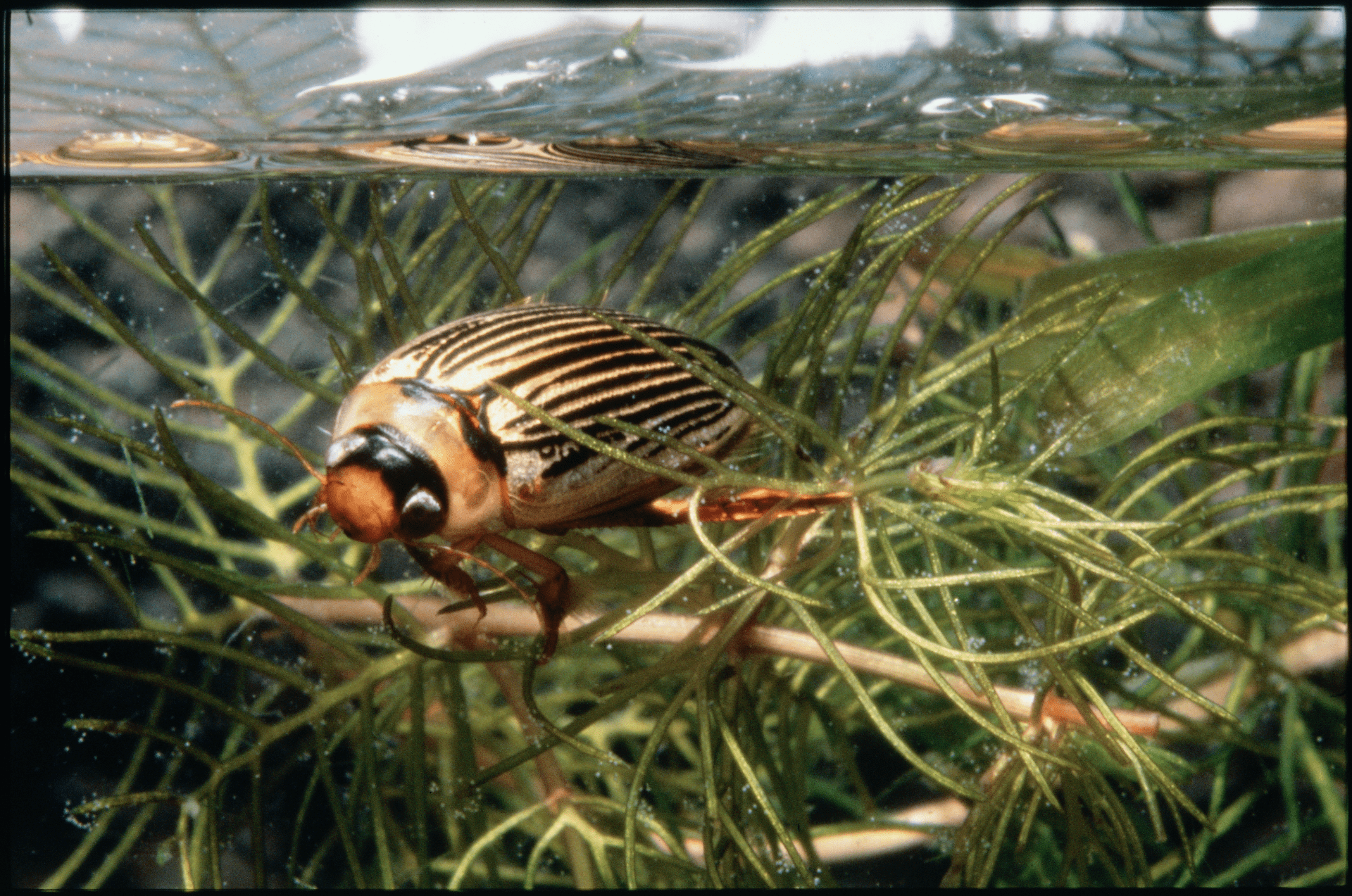
Finding “Nosy Tiger’s” and other oddly named freshwater invertebrates
Words – Eddie Tsrline
Images – Eddie Tsyrlin and John Gooderham
Towbiters, water scorpions and Nosy Tigers. These are just some the colourful names given to freshwater insects and other invertebrates.
And there is a more serious side to these quirky creatures. The Nosy Tigers are a diving beetle larva with a peculiarly elongated head. Their main interest in life is to voraciously consume mosquito larvae and other suitably sized prey. These ’tigers’ pin their prey down with a head horn and then plunge their deeply grooved jaws to inject the prey with digestive enzymes. Then all that is left to do is to suck their victim dry shortly afterwards. The adult Nosy Tiger are also active predators, chasing their prey using their paddle-like back legs and streamlined body shape. In the absence of large fish, in small streams and wetlands, diving beetles (Dytiscidae) often play the role of the top predator and have major influence on the entire food chain and function of the ecosystem. It may sound like an exaggeration but the presence of these beetles together with other invertebrates, plants and microorganisms is one of the secrets of the seemingly magic ability of streams and wetlands to self purify and deliver clean freshwater that we use every day.

Large tiger larvae can easily attack tadpoles – Copyright Tom Sloane @livingdead.taxidermy
As early as the beginning of the 20th century, the invertebrate community has also been used as an important biomonitoring tool to assess the ecological integrity of a freshwater habitat together with other better-known methods like water clarity and chemistry. The principle of biomonitoring itself is centuries old. Miners used to bring a canary with them underground. When the canary stops singing the miners were alerted to the imminent danger of carbon monoxide or other dangerous gases in the mine. A similar concept is used in modern biological monitoring: The community of invertebrates is made up by hundreds of species, each of which is a conceptual ‘canary in a coal mine’ with its own unique set of tolerances to different impacts that the environment and humanity happen to throw at them.
In this scenario it becomes critically important to understand the invertebrate species that live in our streams and wetlands. Allowing us to recognise and to respond to early warning signs about the health our freshwater resources.
While many species of freshwater invertebrates are well known and recognised, others are still waiting to be discovered and described. What makes things even more interesting is that many freshwater insects live in the aquatic environment as a larva while their well-recognised adult forms are terrestrial. Connecting the two stages of life cycle to describe aquatic larvae can be a tricky process where individually isolated larvae are painstakingly reared to the adult form. It requires time, skills and resources. The modern technology of DNA barcoding helps to identify a species using a small fragment of its tissue and to connect the adult form with its yet unrecognisable juvenile without having to rear them in the lab.

Close up of Chostonectes nebulosus larva
But let’s get back to our tigers. The larva of Chostonectes nebulosus aka the Spiny Nosy Tiger has been found only because I decided to stop and investigate an isolated forest pond on the way to another sampling site. Rearing their larvae to adults in the lab has failed, but DNA analysis revealed that it is identical to the described adult. Thanks to help from a Canadian beetle larva expert Yves Alarie and help with DNA barcoding from my supervisor, Dr Melissa Carew, we can now put a name to its terrifying face and separate it from its equally scary-looking cousins, larvae of the other two Chostonectes species recently described by Yves and commonly found around Melbourne.

Dystiscid larva snaring a small crab

A pond in Lerderderg State Forest where the adults and larvae were found
The paper titled “Re-description of larvae of Chostonectes nebulosus (Macleay, 1871) (Coleoptera: Dytiscidae, Hydroporinae, Hydroporini, Sternopriscina) with an identification key to the known larvae of Chostonectes Sharp, 1882” has been recently accepted for publication to Zootaxa.
This work has been funded by Melbourne Water and supported by Water Research Australia